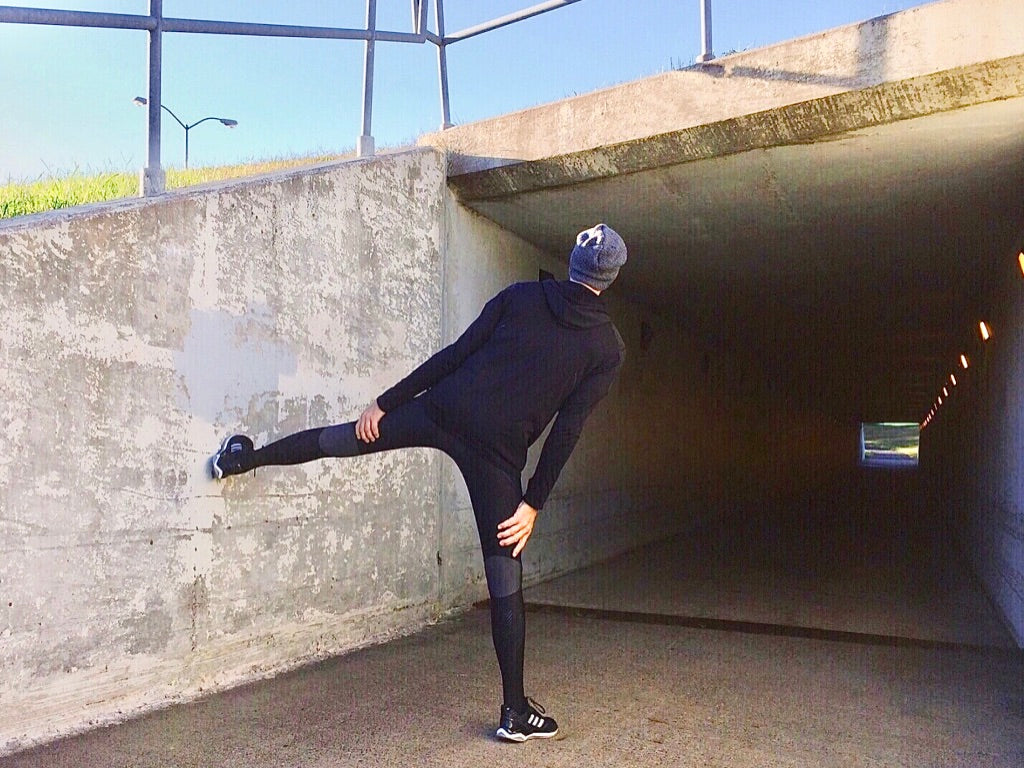
The #1 Mistake Runners Make When They Stretch
Wherever there are runners, there is a familiar, recurring scene. Either at the beginning or end of their run, invariably, they toss a leg up onto a fence or railing, bench or chair, wall or tree, either before or after they do a quick quad stretch.
But here’s the thing… runners have very strong legs and tight hips. So, that reality needs to be dealt with before starting to stretch. Otherwise, the strong, tight muscles kind of just “lock” the body in place which prevents the person from accessing the muscles properly to stretch them.
So, first is to address the hips. The biggest mistake runners make is that they put one leg up too high, which then distorts the alignment of the body generally, and specifically, the hips. If your hips are out of whack, everything is out of whack. The reason this is so problematic is that if you are not lined up, and instead twisted or bent, you end up training your body to be twisted and bent as opposed to stretched and lengthened.
Therefore, rule number one is to set yourself up correctly so that when you move into your stretch, you stretch your muscles long, from end-to-end.
Here is how you do that:
- Lower your leg (you can always start inching it back up once it’s actually been stretched).
- Square your hips so the leg that’s up is not pulling you forward, or higher than the hip of the standing leg.
- Keep both knees straight.
- Stay on top of your ankles. Don’t let them roll in or out.
- Try to lean forward aiming nose to knee or chest to thigh.
- Be aware of what you do with your chin. When muscles are tight, the body still wants to move so people reach out with their chin. But the movement/stretch will not come from jetting your chin out. It must come from your chest moving toward your knee.
- If the knee on the standing leg buckles, that’s also a sign that a tight muscle is pulling back on you. Push down through that foot to straighten the knee and then try to go over again, holding it still and stable.
When all done correctly, the stretch looks like this:

If you practice going for form over distance when you stretch, you will be shocked by how much your flexibility improves, and in turn, how much better your whole body feels!
Meanwhile, you may also enjoy reading our Flexibility Q&A about our new flexibility training workshops.
Lastics is the only stretching method with transformational techniques that teach you how to significantly & safely improve your flexibility. Born from the world of dance and made for all levels, Lastics Stretch is loved by everyone!
RECENT ARTICLES
-
The Difference Between Stretching and Being Stretched
-
Your Arms Are Your Secret Weapon for Achieving Splits
-
How Often Should I Stretch?
-
Novel Exercises For Hip Pain
-
Fibromyalgia, Oxalates and Unexplained Pain
-
Muscles Present A Curious Dichotomy That Can Inform Your Exercise Routine
-
If You Want to Increase Your Flexibility, Assisted Stretching Won’t Do It
-
Why You Stretch and Don’t Gain Flexibility
-
How Long To Hold A Stretch and It's Not 30 Seconds
-
This Is How To Increase Your Flexibility

